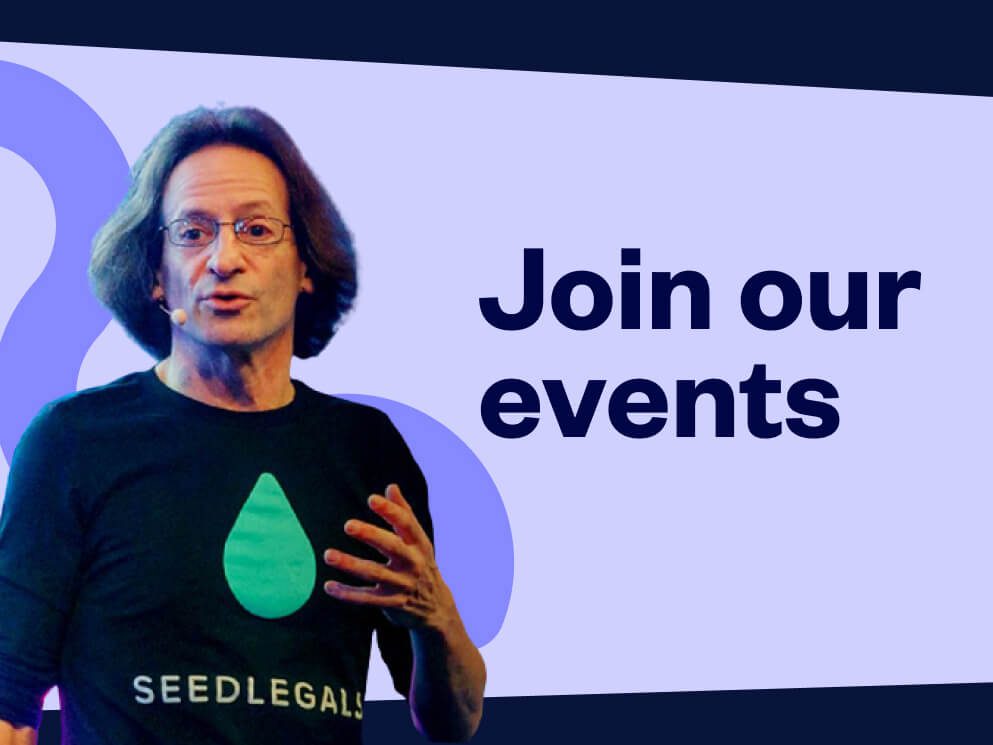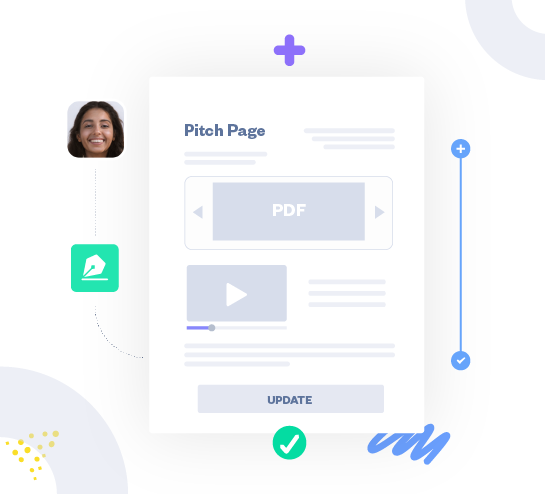How to find startup funding
One of the most common questions founders ask is ‘How do I get funding?’ Read our comprehensive guide to finding funding...
A good pitch deck gets you out of the inbox and into investor meetings. But it’s no easy feat to create a pitch deck convincing enough to grab a busy investor’s attention.
You have just under 20 slides to distil all the incredible work you’ve already done and paint a picture of the potential you see for your business. You need to convince strangers you’re the right destination for tens or hundreds of thousands of their pounds. And all you have is the very limited amount of time an investor will spend scrolling through the pitch deck you send them.
In this post, we explain how to make your pitch deck as impactful as possible:
SeedLegals CEO Anthony Rose sat down with pitch coach Claire Macmillan to explore how to use the power of a good story to win over investors. Watch the video for the full conversation and see Claire give constructive feedback to a set of submitted pitch decks.
The investment deck is your sales pitch to investors for startup funding. It’s not the place to overwhelm readers with market research or rows and rows of numbers.
A startup pitch deck should include high-level information about how your company solves a real problem and why investing in your company now is the right opportunity.
To hook investors, these are the questions you need to answer in your pitch deck:
James ChurchYour solution needs to be clear and concise – this is where many startups fail. Often the explanation of the solution is too complex and long-winded, or it uses industry terminology that the investor doesn’t know. Instead, briefly describe what your idea is in a sentence and boil it down to its core benefits. Focus on the reasons the customer would want to use it – rather than trying to overexplain the technology involved.
Co-Founder and COO,
Build a visually compelling, concise pitch deck with the SeedLegals pitch deck template.
Find inspiration for your pitch with:
🎨A customisable framework for an investment-winning pitch deck
🌟Detailed guidance on what to include in each slide
💁♀️Insightful tips from experts
🔗Links to additional resources
Create an investment-winning pitch deck with our customisable template.
People remember stories much better than plain facts. Put that to your advantage by using the slides in your pitch deck to unfold a compelling story about the opportunity you’ve identified.
Claire MacmillanThe pitch is all about storytelling, particularly when you’re early stage. You don’t have the traction yet or the metrics to prove your success. Instead, you need to make the investor see the opportunity in the same way you do – by bringing your vision to life. Your insights about the market and the expertise of your team are parts of the puzzle that fit together to make a strong story.
Pitch Coach,
So how do you turn the deeply technical information of your B2B SaaS product into a compelling narrative?
Of course you’re excited about the incredible tech you’re developing. But for your pitch deck you need clarity of message, not to dazzle readers with your genius.
Claire advises that you make sure your pitch deck passes the 15-second test. Imagine your potential investor swiping through your deck in only 15 seconds. If at the end of that time, they don’t understand what your company does and why they should be interested, your deck’s going straight in the bin.
There’s no room for wasted space in your pitch deck. Don’t just label your slides ‘The problem’ and ‘Our solution’. Use that prime real estate to unpack a bit more of the story you’re telling about the opportunity you’ve spotted.
Add specifics into your headings so that, when put together, they make a convincing case to investors. The heading on your ‘problem’ slide or slides could state exactly why there’s a need for your product. Your ‘solution’ slide could pick out the USP that makes your company stand out from the competition.
With headings as signposts, you thread a strong message throughout your pitch deck. Not only does it stop your deck looking like a random assortment of slides, each slide will reinforce the message of the one before – and help set the scene for what comes next.
By the end, you’ll have a holistic story with a beginning (problem), middle (solution) and end (investment ask).
Claire MacmillanThe problem has got to really grab you. It’s ok to start high level, but you need to immediately dive a little bit deeper into the specific problem you’re addressing.
If you lose the investor at the problem stage, then it’s over.Pitch Coach,
If an investor doesn’t understand the need for your product or service, they won’t care about the solution you present.
Don’t assume the investor has all the knowledge or context you do. For example, it’s simple to say you’re going to fix an existing process that’s too hard. But spell out why it’s so hard. Try to get the investor invested in the problem – that way, they’ll be more motivated to help solve it by funding your solution.
One way to do this is to create a customer scenario that gives a human face to an abstract problem. By fleshing out a customer persona – essentially creating a character for your pitch story – you can bring the problem you’re describing to life for your audience of investors.
This might sound obvious. But any disconnection between what you said the problem is and how you present your solution will dilute the power of the story you’re telling.
Emphasise how the features of your product or solution have real benefits to the users. If you link those benefits to specific aspects of the overarching problem, you construct an investor-proof narrative about the need for your exact solution.
Visuals help to give your content clarity. It’s not engaging for investors to read through slides and slides of bullet points in small text. Bring the story you’re telling to life by putting emphasis on the most important points through design.
Experiment with content visualisation elements like:
But don’t let beautiful design get in the way of good messaging. Remember that your pitch deck has to be functional, so avoid small fonts in light colours and busy backgrounds.
Will investors assume you’re trying to break into an already crowded market? Get ahead of their objections and tell them early on why the opportunity is there for you to take. Don’t leave it until the market competition slide. If you have a convincing edge over your competitors, put it front and centre in your problem slides.
Remember, investors need to understand why your product will be in demand over the long term. Anything that’s an obvious threat to that longevity should be dealt with upfront.
Feedback is valuable, but you can’t please everyone. Remember that your goal with your pitch deck is to leave your investor with a strong impression. Your message will be muddled (and much less memorable) if it’s made up of too many threads.
Get news about webinars, panels, masterclasses, conferences and networking events delivered straight to your inbox every week.
Sign up to newsletterWe’re always on the hunt for ways to help founders get funding. As well as the pitch deck template, we’ve created a startup starter kit of free ebooks to help you run and grow your business.
And to help you create your pitch deck, here’s a shortlist of helpful articles:
✔ Create your free page in minutes
✔ Add your pitch deck, a video, team bios
✔ Send the link - no more huge files over email
✔ Track page views and investor interest
✔ Add interested investors directly to funding docs










